
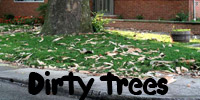
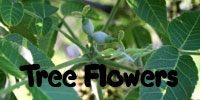
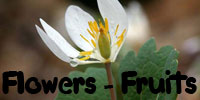
|
Flowers
and Fruits, pt. 8: Simple Fleshy Fruits
A fruit is mainly an adaptation to effect seed dispersal and,
as as such, is one of the few parts of a plant specifically
"meant" to be eaten. Typically, portions of the ovary are nutritious,
but the seeds, indigestible, pass though the fruit-eating animal
unharmed (perhaps along with a little added fertilizer!).
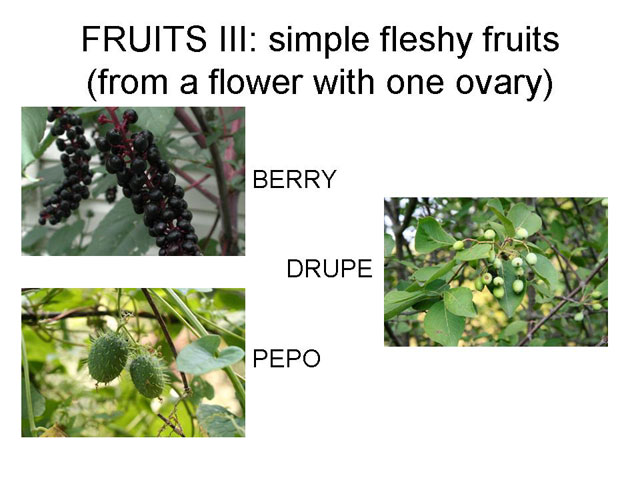
Fleshy fruits are categorized based, in part, according to whether all
of the fruit is fleshy, or instead there are bony or leathery parts. As
such, a BERRY is the fleshiest of the fleshy, with
the outer covering (exocarp), mid-section (mesocarp) and closely
seed-surrounding center (endocarp) all being soft and digestible.
Berries can be one-seeded or several-seeded. (Incidently, a lot of
household fruits with "berry" as part of their name aren't actually
berries. Strawberry? Not a berry. Blackberry? Nope. Raspberry? Uh-uh.
Blueberry? Yes.)
Below, pokweed. This native wildflower, a favorite food of the
now-extinct passenger pigeon, deserves a little more respect than it is
usually afforded.
MOUSEOVER the image
to see pokeweed in flower.
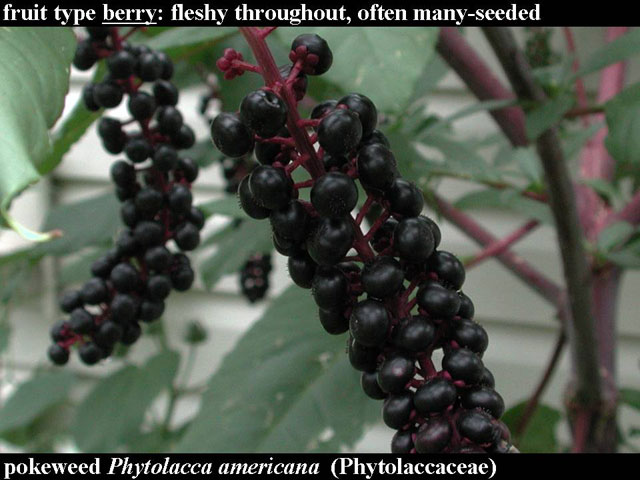
Wild senna fruits are
legumes.
In a wildly successful, never-ending attempt to annoy our neighbors
through botany, we are endeavoring to grow the biggest pokeweed plant
in Columbus, in our front yard. It's shaped sort of like an elm tree.
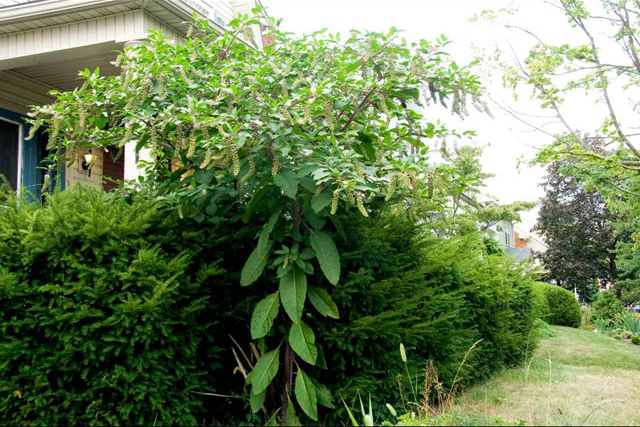
Sequoia pokeweed in Columbus, Ohio, midsummer 2008.
Another very
important, widepread fleshy fruit is the DRUPE.
"How are you?" "I'm
peachy!" "Oh, I'm sorry to hear that." "Why are you sorry?"
""Because that must mean you are feeling kind of drupey"
"Arghhh. That joke is really the endocarps"
A drupe, also known as a "stone fruit," is fleshy nearly throughout,
except that it has a "pit," i.e., a thick bony endocarp surrounding a single seed in
the center. Not only the peache, but also the cherry and plum are
familiar drupes that happen to all be within the same genus, Prunus
(family Rosaceae). Incidently, the almond "nut" (it isn't really a nut)
is the stone of another Prunus. What you crack open
with a nutcracker to expose the edible seed inside is the endocarp. The
almond resembles a peach pit because it practically is one. The drupe
is a common fruit type found in several plant families (often loosely
called "berries.")
Below, black-haw. This is a common woodland shrub, a member of
a family mainly consisting of opposite-leaved shrubs, the
Caprifoliaceae, with three especially well-known genera: Viburnum
(virburnums), Lonicera (honeysuckle), and
Sambuscus (elderberry).
MOUSEOVER
the image to see black haw in flower.
The viburnum fruit is a drupe.
The PEPO is a fruit type found in only one plant
family, the gourd family (Cucurbitaceae). The pepo (gourd) is
essentially a berry with a somewhat thickened rind (although there are
other distintive gurd family traits too, such as having an inferior
ovary and a peculiar way the seeds are attached inside the fruit,
termed "parietal placentation"). Pumpkin, various squash, and cumcumber
are household examples.
Below, wild cucumber. This is a native twining vine. Like all members of
the Cucurbitaceae, it is monoecious, i.e., there are separate male and
female flowers, produced on the same plant. Here (MOUSEOVER the image) the
more abundant male
flowers are in an upright cluster, while the less numerous female ones
are positioned below them. While undergraduate students at SUNY
ESF (Environmental Science and Forestry) in the 1970's, my friend
Michael Corey and I got hired by a plant physiologist
investigating plant hormones to gather big sacks full of wild
cucumber fruits, pinch out their seeds, snip their ends, and carefully
squeeze the juice (endosperm) into test tubes, over and over and over
and over again. It was fun, actually.
MOOSEOVER
the image to see wild cucumber in flower.
Wild
cucumber fruits.
Back: Flowers&Fruits Menu
 
Next:
Aggregate and Multiple Fruits!
|

